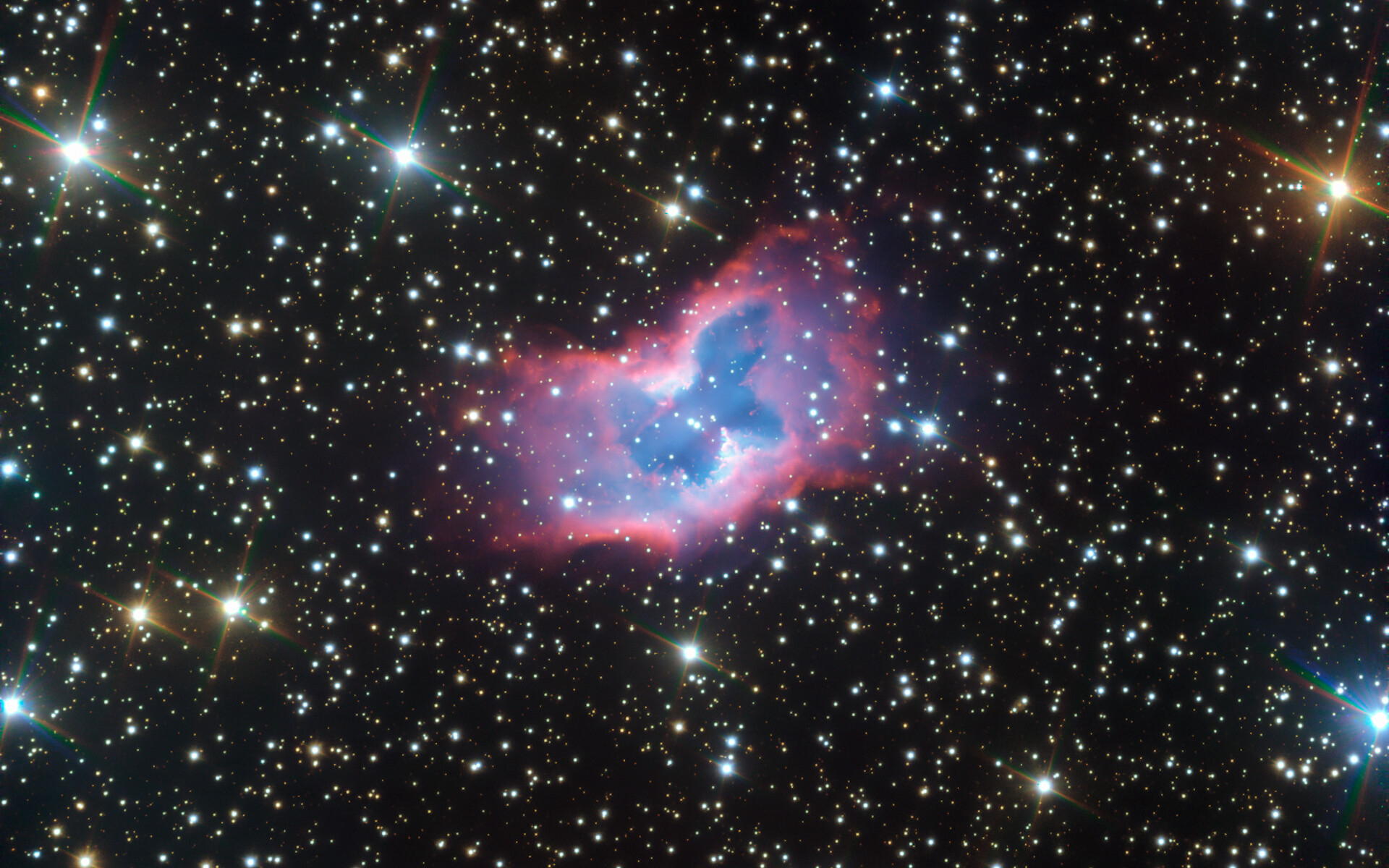'Butterfly' nebula glides across a starry sky in beautiful new video
A mesmerizing new image shows a "space butterfly" appearing to soar against a background of stars.
The nebula, or cloud of gas, is more officially known as NGC 2899; it shows in intricate detail thanks to new observations from the European Southern Observatory's (ESO) Very Large Telescope in Chile.
"This object has never before been imaged in such striking detail, with even the faint outer edges of the planetary nebula glowing over the background stars," ESO said in a statement.
Gallery: Strange Nebula Shapes, What Do You See?
The term "planetary nebula" is a holdover from early telescopic astronomy, when the first such objects observed were compared to the planet Uranus. Scientists now know that planetary nebulas aren't planetary at all and occur when a dying star sloughs off its outer layers of gas, which spread into space.
The gas glows in the light of the slowly fading star, in this case reaching temperatures of more than 18,000 degrees Fahrenheit (10,000 degrees Celsius). In the new image, hydrogen gas is shown in red and oxygen in blue.
Related: 50 fabulous deep-space nebula photos
Breaking space news, the latest updates on rocket launches, skywatching events and more!
NGC 2899 is somewhere between 3,000 and 6,500 light-years away from Earth in the constellation Vela, or the Sails. Embedded in the gas are two central stars in an unusual arrangement, according to ESO. The second star in the pair interferes with the gas flung out by the first, creating the symmetry on display in the image, which is only found in between 10% and 20% of planetary nebulas, according to the statement.
Scientists obtained the image using the visual and near-ultraviolet Focal Reducer and Low Dispersion Spectrograph (FORS) instrument installed on one of the four 27-foot (8.2-meter) telescopes that comprise the Very Large Telescope. FORS has also been used to look at light from gravitational wave sources, to examine the first interstellar asteroid, and to study other planetary nebulas, ESO said.
Follow Elizabeth Howell on Twitter @howellspace. Follow us on Twitter @Spacedotcom and on Facebook.

Elizabeth Howell (she/her), Ph.D., was a staff writer in the spaceflight channel between 2022 and 2024 specializing in Canadian space news. She was contributing writer for Space.com for 10 years from 2012 to 2024. Elizabeth's reporting includes multiple exclusives with the White House, leading world coverage about a lost-and-found space tomato on the International Space Station, witnessing five human spaceflight launches on two continents, flying parabolic, working inside a spacesuit, and participating in a simulated Mars mission. Her latest book, "Why Am I Taller?" (ECW Press, 2022) is co-written with astronaut Dave Williams.

